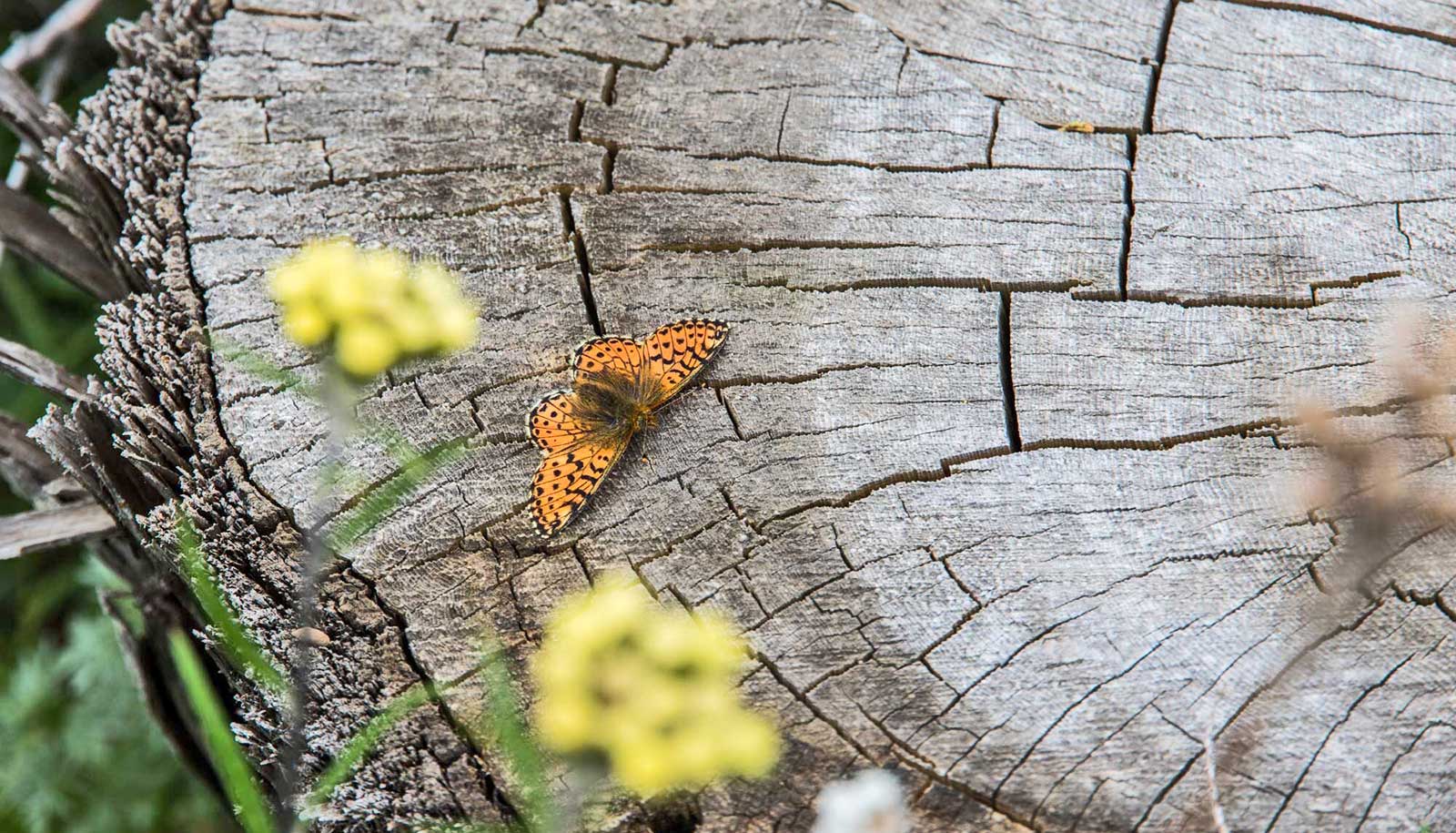About one-fifth of California’s Sierra Nevada conifer forests are a mismatch for the region’s warming weather, a new study shows.
The study shows how these “zombie forests” are temporarily cheating death, likely to be replaced with tree species better adapted to the climate after one of the state’s increasingly frequent catastrophic wildfires.
“Forest and fire managers need to know where their limited resources can have the most impact,” says lead author Avery Hill, a graduate student in biology at Stanford University at the time of the research.
“This study provides a strong foundation for understanding where forest transitions are likely to occur, and how that will affect future ecosystem processes like wildfire regimes.” Hill led a related study this past November showing how wildfires have accelerated the shifting of Western trees’ ranges.
Forest conifers can’t adapt
Sierra Nevada conifers, such as ponderosa pine, sugar pine, and Douglas fir are among Earth’s tallest and most massive living things. They have stood watch as temperatures around them warmed by an average of a little over 1 degree Celsius or 2 degrees Fahrenheit since the 1930s.
The number of Sierra Nevada conifers no longer suited to the climate will double within the next 77 years.
Meanwhile, recent years have seen a giant wave of new human residents drawn to the lower elevations of the Sierra Nevada by spectacular scenery, relaxed lifestyles, and relative affordability. The combination of hotter weather, more construction, and a history of fire suppression have fueled increasingly destructive wildfires, making the names of communities like Paradise and Caldor synonymous with Mother Nature’s fury.
Hill and his coauthors started by combing through vegetation data going back 90 years, when the vast majority of human-caused warming had yet to occur. Fed this information, a computer model designed by the researchers showed that the mean elevation of conifers has shifted 34 meters or almost 112 feet upslope since the 1930s, while the temperatures most suitable for conifers have outclimbed the trees, shifting 182 meters or nearly 600 feet upslope on average.
In other words, the speed of change has outpaced the ability of many conifers to adapt or shift their range, making them highly vulnerable to replacement, especially after stand-clearing wildfires.
Maps of zombie forests
The study estimates that about 20% of all Sierra Nevada conifers are mismatched with the climate around them. Most of those mismatched trees are found below an elevation of 2,356 meters or 7,730 feet. The prognosis: even if global heat-trapping pollution decreases to the low end of scientific projections, the number of Sierra Nevada conifers no longer suited to the climate will double within the next 77 years.
“Given the large number of people who live in these ecosystems and the wide range of ecosystem services they confer, we should be looking seriously at options for protecting and enhancing the features that are most important,” says coauthor Chris Field, director of the Stanford Woods Institute for the Environment within the Stanford Doerr School of Sustainability.
The study’s first-of-its-kind maps paint a picture of rapidly changing landscapes that will require more adaptive wildfire management that eschews suppression and resistance to change for the opportunity to direct forest transitions for the benefit of ecosystems and nearby communities.
Similarly, conservation and post-fire reforestation efforts will need to consider how to ensure forests are in equilibrium with future conditions, according to the researchers. Should a burned forest be replanted with species new to the area? Should habitats that are predicted to go out of equilibrium with an area’s climate be burned proactively to reduce the risk of catastrophic blazes and corresponding vegetation conversion?
“Our maps force some critical—and difficult—conversations about how to manage impending ecological transitions,” says Hill. “These conversations can lead to better outcomes for ecosystems and people.”
The study appears in PNAS Nexus. The Gordon and Betty Moore Foundation funded the work.
Source: Stanford University

